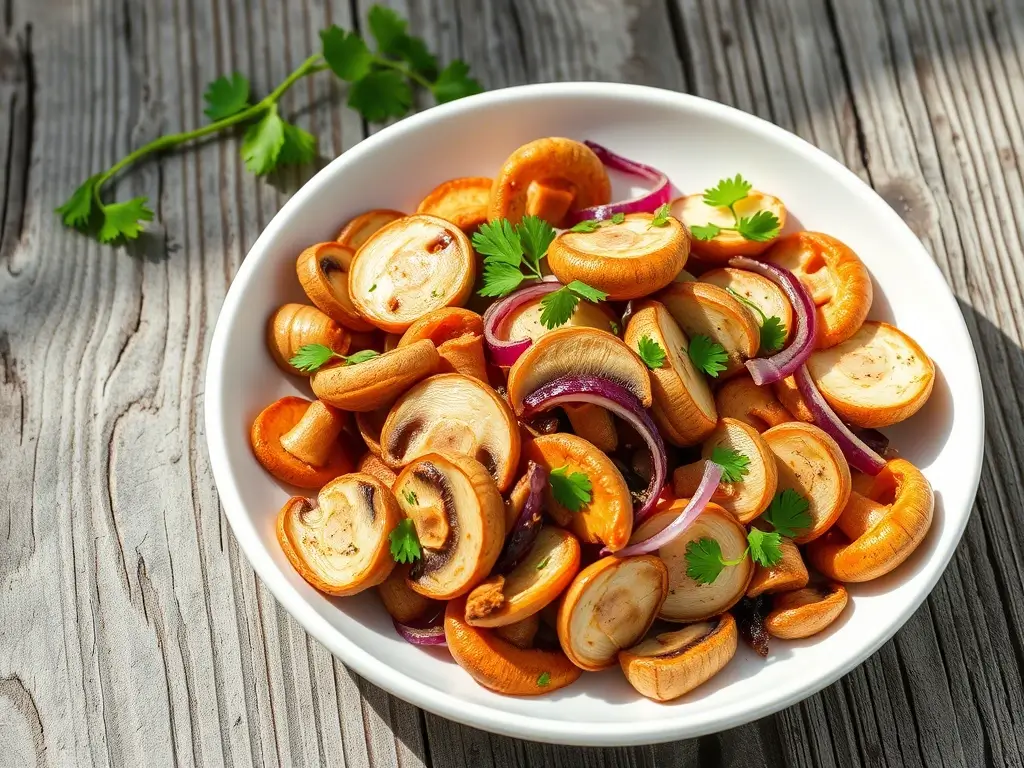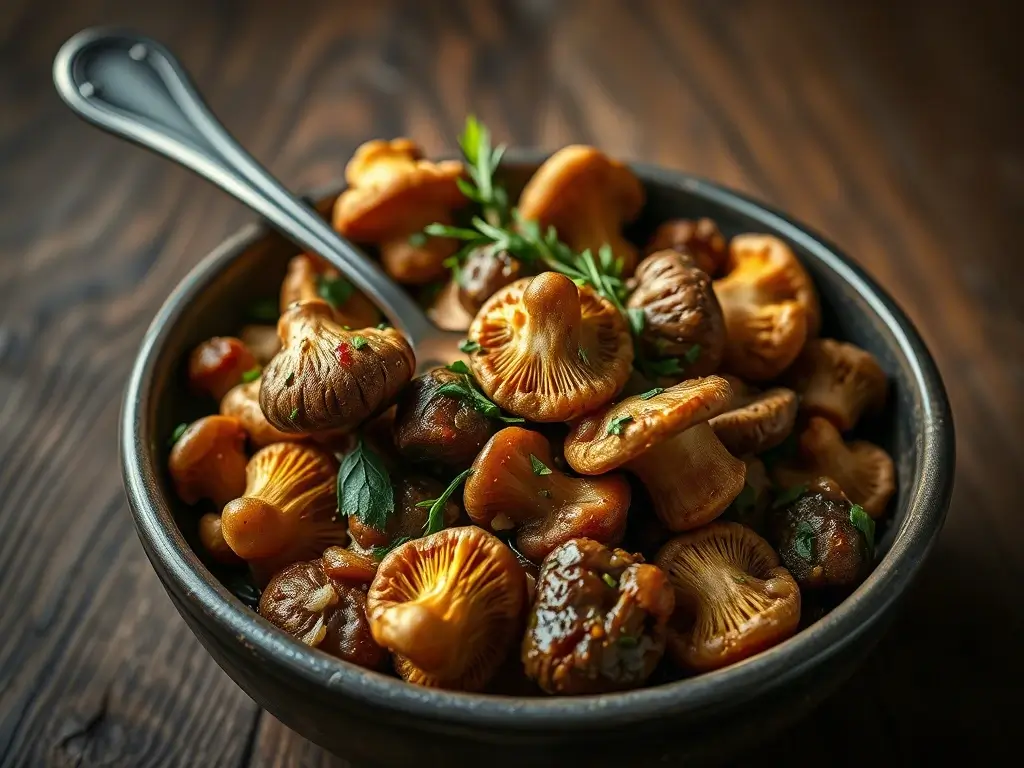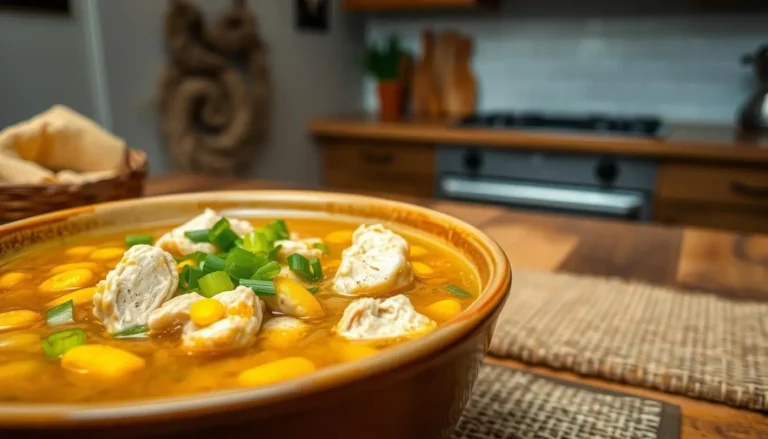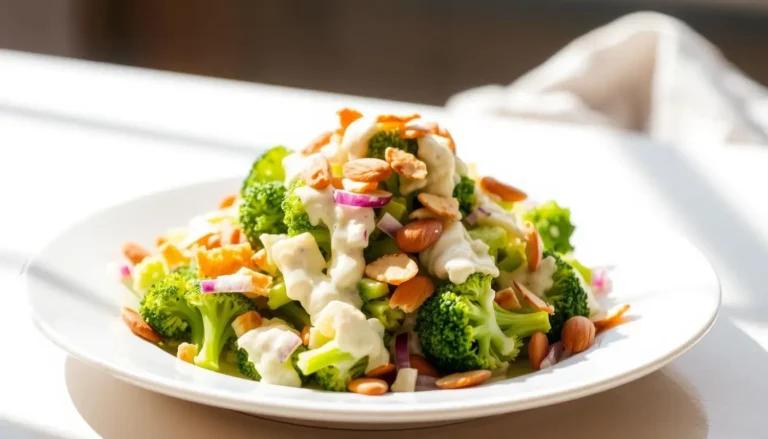Delicious Chicken of the Woods Recipes to Try at Home
Table of Contents
Delicious Chicken of the Woods Recipes to Try at Home
Last fall, a friend handed me a vibrant orange mushroom cluster she’d foraged near a hiking trail. “Tastes like lemon-kissed fried chicken,” she promised. Skeptical but curious, I sliced, battered, and pan-fried it. The result? A crispy, golden dish with a texture reminiscent of poultry and a subtle citrus undertone. That’s when I realized: this wild fungi—often called “chicken woods”—deserves a spot in every adventurous cook’s kitchen. These chicken of the woods recipes are truly something special.

Whether you’re new to foraging or a seasoned mushroom enthusiast, this guide unlocks creative ways to transform your finds into mouthwatering meals. We’ll explore frying techniques for crunch, marinades to enhance natural flavors, and roasting methods that caramelize edges perfectly. You’ll also learn how to safely identify, clean, and prep these fungi—because great dishes start with quality ingredients.
Inspired by trusted sources like Barbora Batokova’s zesty fried variation, each recipe balances simplicity with bold results. From weeknight dinners to impressive appetizers, these ideas cater to home cooks craving innovation. Ready to turn your next haul into something extraordinary?
Key Takeaways
- Discover multiple cooking methods, including frying and roasting, to highlight the mushroom’s unique texture.
- Learn expert tips for selecting fresh, safe-to-eat wild fungi.
- Master preparation steps to ensure optimal flavor and safety.
- Explore recipes inspired by trusted culinary sources for reliable results.
- Adapt techniques to create dishes ranging from casual meals to gourmet plates.
Introduction to Wild Mushroom Cooking
Wild mushroom cooking transforms forest treasures into unforgettable meals. Unlike store-bought varieties, foraged fungi like chicken woods offer bold textures and earthy flavors you can’t replicate. Their shelf-like clusters glow like autumn leaves, making them easy to spot on decaying trees.

Discovering the Unique Chicken of the Woods
Look for vibrant orange shelves with pale yellow edges. Young specimens feel soft and spongy—ideal for cooking. Avoid older mushrooms, as they toughen and may cause stomach discomfort if undercooked. Always confirm identification with a local expert before harvesting.
Why You Should Try Cooking with Wild Mushrooms
These fungi add excitement to your kitchen. Their meaty texture holds up to frying, roasting, or marinating. A single cup can elevate soups, stir-fries, or pasta dishes. Plus, cleaning them properly removes dirt and bugs, ensuring safe meals.
Pro tip: Start with small portions to test your tolerance. Pair them with simple ingredients like garlic or olive oil to let their natural flavors shine. Later sections will guide you through selecting, prepping, and transforming these wild finds into crowd-pleasing plates.
Selecting and Preparing Your Chicken of the Woods
Mastering wild fungi starts with proper selection and preparation. Fresh specimens transform meals, while older ones risk tough textures or bitterness. Follow these guidelines to ensure your haul shines in every dish.
Tips for Identifying Fresh, Young Mushrooms
Seek clusters with vibrant orange hues and soft, pliable edges. Press gently—young mushrooms feel spongy and release slight moisture. Avoid chalky-white or brittle shelves, which indicate over-maturity. The best chicken woods grow on hardwood trees like oaks, not conifers.
| Feature | Young Mushrooms | Mature Mushrooms |
| Texture | Soft, flexible | Dry, crumbly |
| Color | Bright orange-yellow | Faded or chalky |
| Moisture | Slightly damp | Dry or cracked |
Essential Cleaning and Trimming Techniques
Fill a bowl with cold water. Carefully swirl the pieces in water to remove any dirt, then dry them off. Trim woody stems using a sharp knife—these won’t soften during cooking. For stubborn debris, rub surfaces with a damp cloth instead of soaking.
- Slice into uniform pieces for even cooking
- Blot excess moisture with paper towels
- Store cleaned fungi in a sealed container for up to 3 days
Proper prep ensures your ingredients retain their natural texture and absorb flavors better. Now you’re ready to tackle the recipes ahead!
Step-by-Step Chicken of the Woods Recipes
Transform your kitchen into a wild food bistro with three showstopping preparations. Each method highlights the mushroom’s versatility while maintaining its signature texture. Follow these tested techniques to create dishes that rival restaurant-quality meals.
Fried Chicken of the Woods: Crunch and Flavor
Parboil 2 cups of sliced mushrooms in salted water for 5 minutes. Drain thoroughly. Set up three bowls: 1/2 cup flour, 2 beaten eggs, and 1 cup panko crumbs mixed with 1 tsp garlic powder.
Coat each mushroom piece in flour, immerse in egg, and then cover with the crumb mixture. Warm 1/2 cup of oil in a skillet over medium heat. Fry until golden (3-4 minutes per side). Drain on paper towels and sprinkle with pepper.
Garlic-Tomato Sherry Sauce Recipe Walkthrough
Sauté 1 diced onion in 2 tbsp butter until translucent. Add 3 minced garlic cloves and cook 1 minute. Add 1 cup of halved cherry tomatoes along with 1/4 cup of cooking sherry.
Simmer 8 minutes until tomatoes burst. Stir in 1 tsp thyme and pinch of salt. Spoon this aromatic sauce over fried mushrooms for a tangy contrast.
Marinating and Roasting for Enhanced Texture
Whisk 1 cup coconut yogurt with 1 tsp each turmeric, cumin, and garam masala. Coat 3 cups of pieces in the marinade. Let sit 30 minutes.
Arrange on a parchment-lined tray. Bake at 400°F for 20 minutes until the edges turn golden. Pro tip: Flip halfway through for even crispness. Serve with lemon wedges to brighten earthy flavors.
Enhancing Flavor with Complementary Ingredients
Balancing textures and tastes transforms simple mushrooms into culinary stars. Strategic pairings amplify their natural earthiness while preventing overpowering flavors. Let’s explore how fats, acids, and aromatics create harmony on your plate.
Balancing Moisture with Olive Oil, Butter, and Sherry
Use 1/2 cup olive oil for sautéing—it adds richness without heaviness. Combine with 2 tbsp butter for depth, but cook over medium heat to avoid burning. Deglaze pans with a splash of sherry to cut through richness and add brightness.
| Ingredient | Purpose | Best Used With |
| Olive Oil | Prevents sticking, light base | High-heat sautéing |
| Butter | Adds creaminess | Low-heat finishing |
| Sherry | Balances fat | Pan sauces |
Incorporating Herbs, Spices, and Aromatics
Fresh thyme and basil bring herbal notes that complement earthy profiles. Mince 3 garlic cloves per cup of mushrooms for pungent warmth. Quickly toast spices such as cumin in oil to release their fragrance prior to incorporating the mushrooms.
Adjust salt early in cooking to draw out moisture. Finish with cracked pepper for a spicy kick. For sauces, whisk ingredients in a bowl first to ensure even distribution before heating in the pan.
Pro tip: Serve as a side with lemon wedges or make it the main dish by tossing with pasta. The key is balancing bold flavors to let the mushrooms shine without masking their unique texture.
Conclusion
Unlocking the culinary potential of wild fungi starts with knowledge and creativity. You’ve learned to identify vibrant clusters, clean them thoroughly, and apply techniques that highlight their meaty texture. Proper preparation—like trimming tough stems and using a bowl of cold water—ensures safety while preserving natural flavors.
Experiment with olive oil or butter in your pan to balance moisture during cooking. A dash of garlic or splash of sherry can elevate simple dishes into memorable meals. Remember: precise seasoning and measured cups of ingredients let the mushroom’s unique profile shine.
Revisit these methods whenever you forage fresh chicken woods. Adjust spice blends or try new herb pairings to make each recipe your own. Whether served as a hearty side or main dish, these fungi offer endless kitchen adventures.
Grab your basket and knife—nature’s pantry awaits. With every sautéed slice or roasted batch, you’re mastering a skill that transforms forest finds into extraordinary plates. What wild flavor will you discover next?
FAQ
How do I know if chicken of the woods is safe to eat?
Always verify its identity using trusted foraging guides or consult an expert. Avoid mushrooms growing on toxic trees like eucalyptus or conifers. Young, vibrant specimens with firm texture are ideal for cooking.
Can I substitute olive oil with other fats in recipes?
Yes! Butter, avocado oil, or ghee work well. For a richer flavor, try combining fats—like using butter for sautéing and olive oil for roasting. Adjust based on smoke points and dietary preferences.
Why does my cooked mushroom turn rubbery?
Overcooking can toughen the texture. Sauté or roast in batches at medium heat, and let pieces caramelize without overcrowding the pan. Marinating beforehand also helps retain tenderness.
What’s the best way to balance moisture while cooking?
Pat pieces dry after cleaning. Use high heat initially to sear surfaces, then lower to finish. Deglaze pans with sherry or broth to add flavor without excess liquid.
Are there vegan alternatives for butter-based sauces?
Absolutely. Coconut oil or plant-based butter mimics richness. For the garlic-tomato sherry sauce, use vegetable broth instead of dairy-based ingredients to keep it vegan-friendly.
How long can I store prepared dishes?
Cooked mushrooms last 3–4 days refrigerated in airtight containers. Freezing isn’t recommended, as it alters texture. For freshness, consume within 48 hours.


